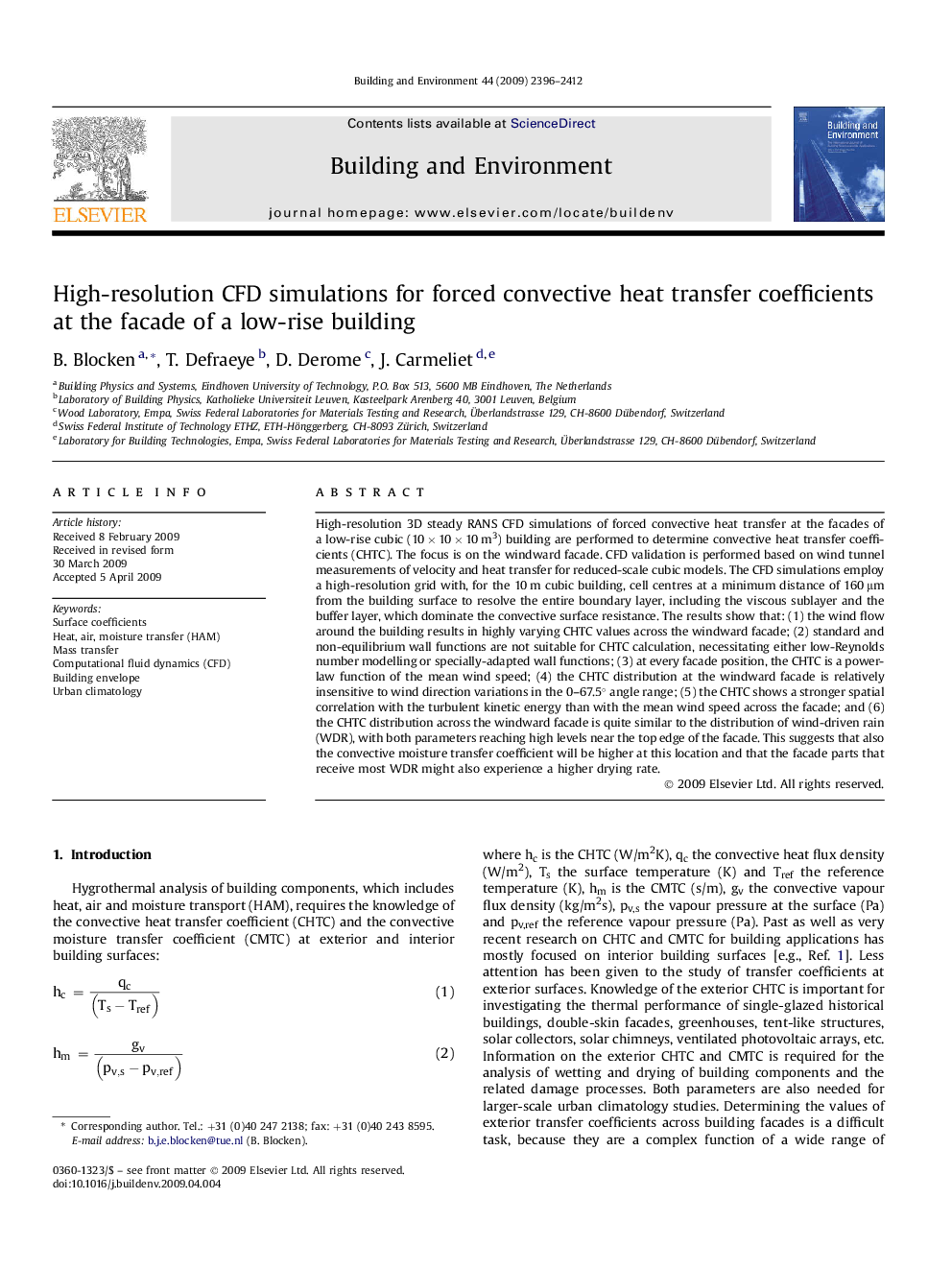| کد مقاله | کد نشریه | سال انتشار | مقاله انگلیسی | نسخه تمام متن |
|---|---|---|---|---|
| 249537 | 502614 | 2009 | 17 صفحه PDF | دانلود رایگان |

High-resolution 3D steady RANS CFD simulations of forced convective heat transfer at the facades of a low-rise cubic (10 × 10 × 10 m3) building are performed to determine convective heat transfer coefficients (CHTC). The focus is on the windward facade. CFD validation is performed based on wind tunnel measurements of velocity and heat transfer for reduced-scale cubic models. The CFD simulations employ a high-resolution grid with, for the 10 m cubic building, cell centres at a minimum distance of 160 μm from the building surface to resolve the entire boundary layer, including the viscous sublayer and the buffer layer, which dominate the convective surface resistance. The results show that: (1) the wind flow around the building results in highly varying CHTC values across the windward facade; (2) standard and non-equilibrium wall functions are not suitable for CHTC calculation, necessitating either low-Reynolds number modelling or specially-adapted wall functions; (3) at every facade position, the CHTC is a power-law function of the mean wind speed; (4) the CHTC distribution at the windward facade is relatively insensitive to wind direction variations in the 0–67.5° angle range; (5) the CHTC shows a stronger spatial correlation with the turbulent kinetic energy than with the mean wind speed across the facade; and (6) the CHTC distribution across the windward facade is quite similar to the distribution of wind-driven rain (WDR), with both parameters reaching high levels near the top edge of the facade. This suggests that also the convective moisture transfer coefficient will be higher at this location and that the facade parts that receive most WDR might also experience a higher drying rate.
Journal: Building and Environment - Volume 44, Issue 12, December 2009, Pages 2396–2412